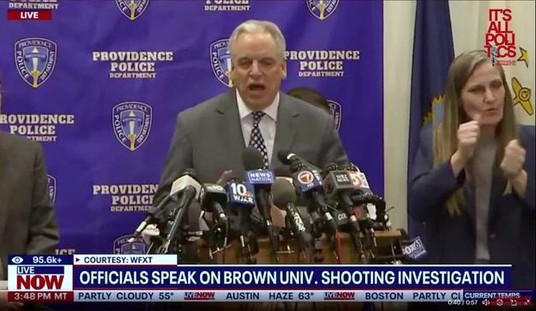WASHINGTON – Talk of housing-finance market reform seems close to action as various proposals promise to move forward the national debate about the future of Fannie Mae and Freddie Mac.
Four decades ago, Congress set up Fannie Mae and Freddie Mac as government-sponsored enterprises (GSEs) – privately owned financial institutions established by the government to fulfill a public mission.
The two GSEs were created to provide a stable source of funding for residential mortgages, including loans on housing for low- and middle-income families. Fannie and Freddie fulfill that mission through their operations in the secondary mortgage market. The two companies buy mortgages that meet certain standards from banks and other loan originators, pool those loans into mortgage-backed securities that they guarantee against losses from defaults on the underlying mortgages, and sell the securities to investors.
Fannie and Freddie also buy mortgages and mortgage-backed securities – from each other and from private investors – to hold in their portfolios. Since their creation, the implicit government backing allowed them to fund their portfolio holdings at much lower interest rates than those paid by private finance institutions, which made it easier to make money by purchasing home loans. That meant generous salaries for executives and hefty returns for shareholders. Some of those benefits flowed to mortgage borrowers in the form of greater availability of credit and slightly lower interest rates.
The two companies dealt mostly with standard, 30-year, fixed-rate loans, which are common in the U.S. but rare elsewhere. But then in the mid 2000s, subprime lenders came on the scene, making loans to people with poor credit histories. As Fannie and Freddie began losing market share to investment banks, the two companies joined the subprime industry. They started accepting lower credit scores, stopped requiring proof of income from all borrowers, and invested in securities made up of subprime loans. A high percentage of these subprime mortgages had an adjustable rate. After U.S. house prices peaked in mid-2006 and began their steep decline, refinancing became more difficult. As adjustable-rate mortgages began to reset their values at higher interest rates mortgage delinquencies soared.
A couple of years later, Fannie and Freddie were on the brink of bankruptcy after the mortgage market came crashing down. The majority of Fannie and Freddie’s losses were a result of guaranteeing mortgages that defaulted during the housing crisis. The government seized them later in 2008 and pumped in approximately $187 billion in bailout money with the goal of eventually getting rid of them. The companies now back around 90 percent of mortgages in the U.S.
Recent housing finance reform proposals all suggest a greater role for private lending and finally putting an end to the two companies. The bill that the House will consider this fall proposes a housing-finance market primarily operated by the private sector. The Senate rival to the House bill keeps the government in control of housing finance but to a lesser degree.
In a speech in Arizona last month, President Obama joined the debate by proposing to wind down the two mortgage giants by rolling back the role of the GSEs in buying mortgages from lenders. He endorsed the bipartisan push of legislation from a Senate group that would phase out Fannie and Freddie over five years.
“For too long, these companies were allowed to make big profits buying mortgages, knowing that if their bets went bad, taxpayers would be left holding the bag,” the president said. “It was ‘heads we win, tails you lose.’”
The Senate bill, sponsored by Sens. Mark Warner (D-Va.) and Bob Corker (R-Tenn.), would shrink the portfolios of Fannie and Freddie and lose the implicit guarantee of a federal government bailout. It would create a new federal entity modeled after the Federal Deposit Insurance Corporation (FDIC) to provide a smaller share of government-backed securities than the current market.
Meanwhile, the House Finance Services Committee, led by Rep. Jeb Hensarling (R-Texas), has produced its own bill that would also wind down Fannie and Freddie over five years. The bill would mostly privatize the mortgage finance market, leaving the Federal Housing Administration (FHA) and other government housing agencies to provide loans for low-income and first-time homebuyers.
Hensarling said during a speech at the George W. Bush Presidential Center in Dallas the first step to housing finance reform is to permanently move away from a cycle of “boom, bust, and bailout.”
He praised the growing number of ideas for housing finance reform, but said he remains skeptical of any approach that does not end the government guarantee in the secondary mortgage market.
“If, at the end of the day, taxpayers are still on the hook, then I fear all you’ve done is put Fannie and Freddie in the federal witness protection program, given them cosmetic surgery and a new identity, and released them on an unsuspecting public,” Hensarling said.
The president said that any measure he signed into law should maintain “fair and simple” mortgage products like the 30-year fixed mortgage rate.
“That’s something families should be able to rely on when they’re making the most important purchase of their lives,” he said.
A recent rise in housing prices has helped the two companies post record profits. This has gotten the attention of those calling for reform.
Fannie posted a record $17.2 billion profit for the January-March period after Freddie posted a record $11 billion profit for last year. The companies paid the government $132 billion in dividends on the bailout money and announced their plans to make additional payments totaling $14.6 billion next month. Under the terms of the bailout agreement, Fannie and Freddie are required to pay quarterly dividends to the U.S. government equal to their net worth in excess of $3 billion.
Those payments are helping make this year’s federal budget deficit the smallest since 2009, according to the Congressional Budget Office.
Last year, the Federal Housing Finance Agency (FHFA) began work on accounting changes that require the two mortgage finance firms to charge off estimated losses on loans delinquent at least 180 days. Currently, the firms take those charges when the loans complete foreclosure.
According to a report from the FHFA’s inspector general made public last week, the two GSEs have been avoiding billions of dollars in potential long-term losses by delaying a requirement that they write off more of the delinquent mortgages they carry.
But as the Wall Street Journal notes, because the two mortgage finance firms are already reserving for losses, the policy change would not necessarily change the profit or loss experienced by the companies. Instead, it would change the timing by which Fannie and Freddie account for losses on loans.
The report said that the FHFA’s timeframe for the mortgage finance companies to delay implementation of the new accounting rules was “inordinately long.” The FHFA has given Fannie and Freddie until January 2015 to comply with the new accounting procedures. Nevertheless, the FHFA’s inspector general recommended that the new accounting procedures should be enacted much sooner.









Join the conversation as a VIP Member